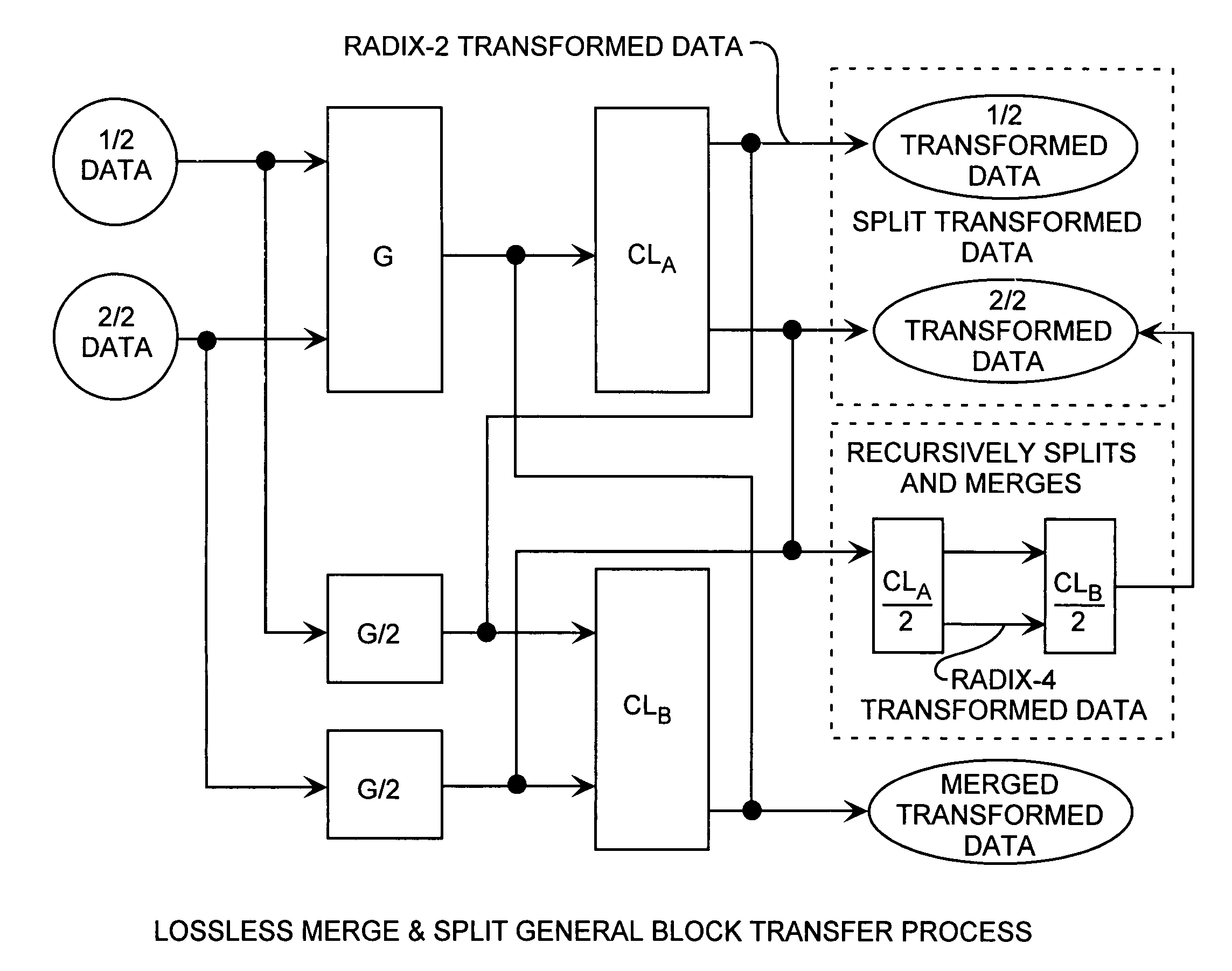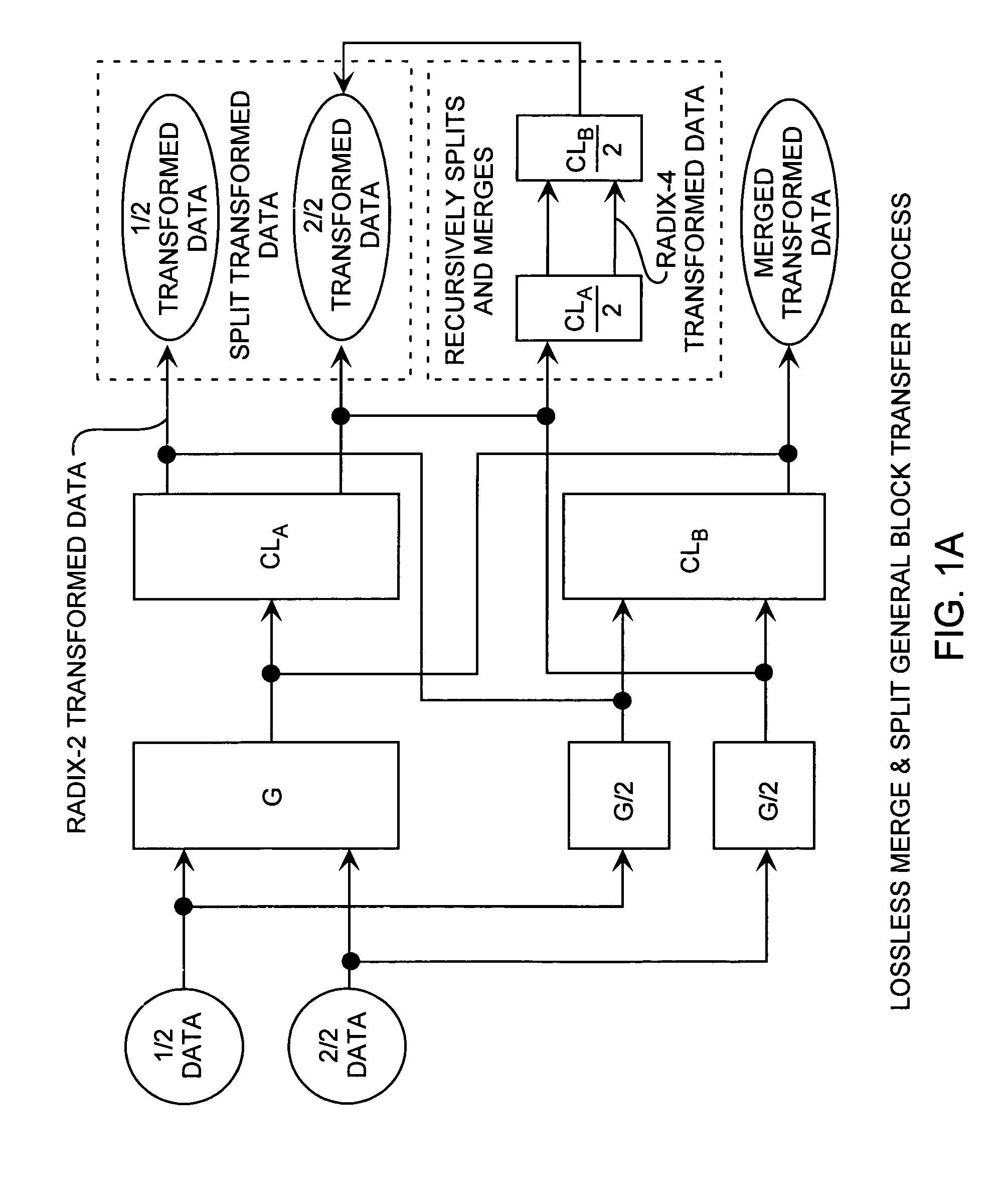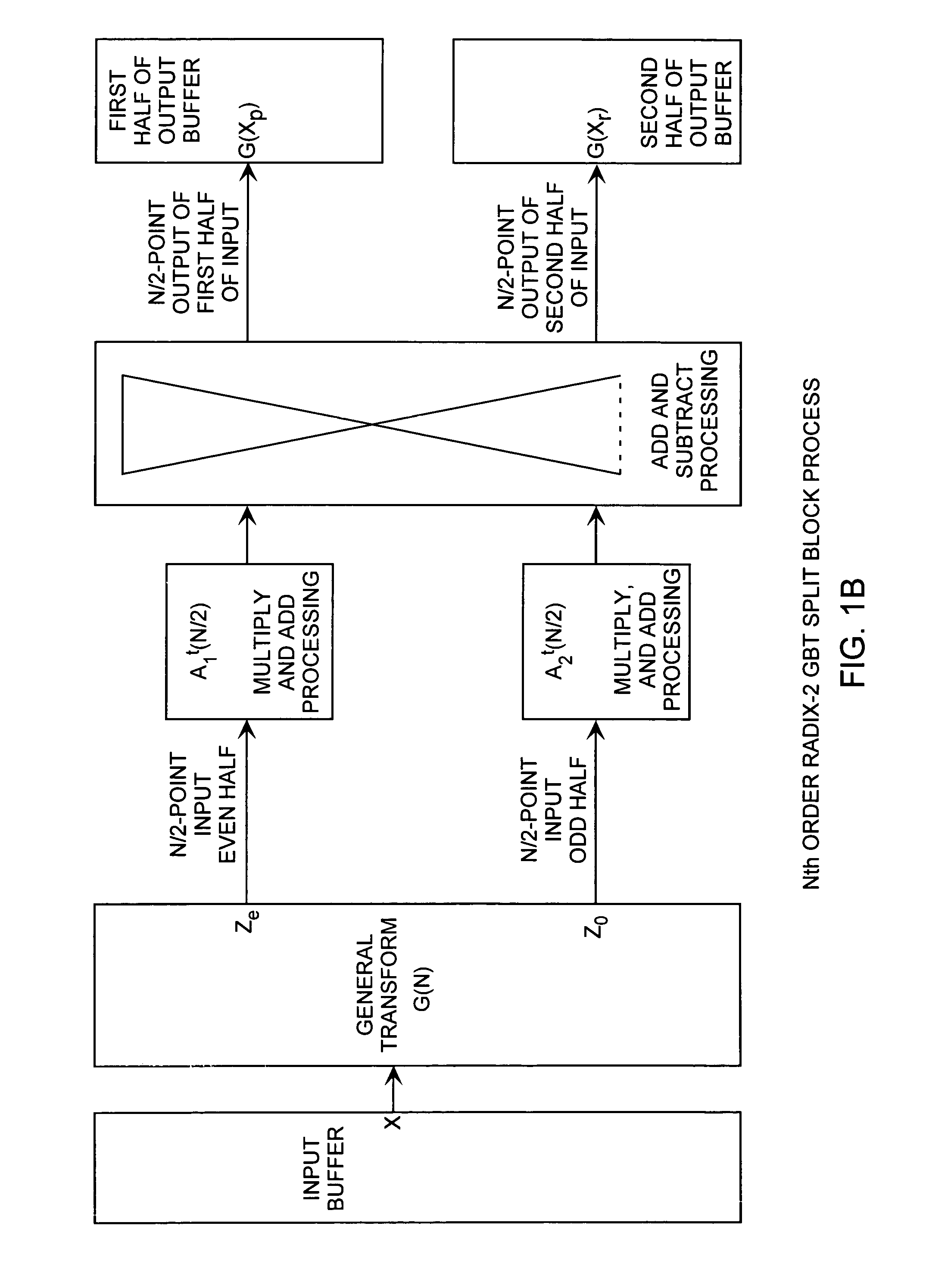Merge and split fast hartley block transform method
a technology of merge and split, which is applied in the field of separate and combine block transforms for communicating data, and can solve problems such as further degradation of image quality, quantitative process production, and image quality degradation
- Summary
- Abstract
- Description
- Claims
- Application Information
AI Technical Summary
Benefits of technology
Problems solved by technology
Method used
Image
Examples
Embodiment Construction
[0047]Various detailed embodiments of the invention are described with reference to the FIGS. 2A through 6B using reference designations as shown in the figures. The transformation methods are shown by high-level block process diagrams for both the split and merge transformations, and are then shown by exemplar detailed flow processes for both split and merge transformations. In the flow diagrams, the dots represent additions, dashed lines represent sign changes, circles and mathematical references are multiplications, with the transforms and combinational logic shown as blocks.
Fast Fourier Transforms (FFT)
[0048]Referring to FIGS. 2A through 2D, the Discrete Fourier transform (DFT) in one dimension is defined by a DFT equation.
[0049]z(k)=1N∑n=0N-1[cos(2πnk / N)+jsin(2πnk / N)]x(n)
[0050]The fast Fourier transform (FFT) in one dimension is represented by the linear equation z=F(N)x, where x is the input vector with elements {xn; n=0, 1, 2, . . . , N−1} and z is the ou...
PUM
 Login to View More
Login to View More Abstract
Description
Claims
Application Information
 Login to View More
Login to View More - R&D
- Intellectual Property
- Life Sciences
- Materials
- Tech Scout
- Unparalleled Data Quality
- Higher Quality Content
- 60% Fewer Hallucinations
Browse by: Latest US Patents, China's latest patents, Technical Efficacy Thesaurus, Application Domain, Technology Topic, Popular Technical Reports.
© 2025 PatSnap. All rights reserved.Legal|Privacy policy|Modern Slavery Act Transparency Statement|Sitemap|About US| Contact US: help@patsnap.com



